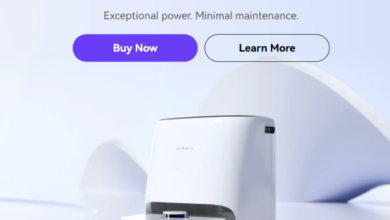Understanding Brushless Motors: A Practical Guide for Drone Builders and Pilots

Brushless motors have become one of the core components in today’s drone ecosystem. Whether used in FPV drones, aerial photography platforms, industrial UAVs, or educational robotics projects, these motors provide the efficiency, reliability, and responsiveness required for precise flight control. As drone technology continues to expand across different use cases, understanding how brushless motors function—and how they differ from older brushed motors—has become increasingly important for both hobbyists and professionals.
This article provides an objective and accessible overview of brushless motors, focusing on how they work, where they are used, and what buyers should consider when evaluating them for drones.
What Is a Brushless Motor?
A brushless motor (BLDC motor) is an electric motor that operates without the carbon brushes used in older DC motors. Instead of mechanical commutation, brushless motors rely on electronic control systems to regulate current and rotation.
Key characteristics include:
- Higher efficiency due to reduced friction and electrical losses
- Longer lifespan because there are no brushes to wear out
- Better heat management
- Faster and more precise response
- Lower maintenance requirements
These advantages have made brushless motors the standard choice for drones, where precise power delivery and consistent performance are fundamental.
- How Brushless Motors Work in a Drone
Drone brushless motors function through a combination of magnetic fields generated by:
- The stator (stationary coils)
- The rotor (rotating bell containing magnets)
- An electronic speed controller (ESC)
The ESC governs phase switching to control rotation speed, torque, and direction. This electronic commutation allows for smooth throttle changes and stable operation under variable loads—an essential requirement for multirotor drones that constantly adjust motor output to maintain stability.
- Where to Buy?
3.1 Discover MEPSKING: Your Premier One-Stop Shop for FPV Drone
MEPSKING is a leading online platform dedicated to FPV drone enthusiasts. As a trusted industry leader, MEPSKING bring you an extensive range of high-quality FPV drones and accessories, making it easier than ever to find everything you need for your next flight adventure.
At MEPSKING, we’ve partnered with top-tier brands like T-Hobby, Tattu, and BoLipo to provide a wide selection of FPV essentials. You can choose drone parts from motors, ESCs, FCs, and Props to FPV LiPo batterie.
Plus, our exciting ongoing events make shopping even more rewarding:
- MEPSKING VINE VOICE – Unlock 6 exclusive benefits, including 3 times free draws and 15% 0ff coupon.
- Spin the Lucky Wheel – Win exclusive prizes and discounts.
- Free Product Trials – Test our products at no cost.
- Social Media Events – Engage with us on our official channels for a chance to win.
See also: The Great Healthcare Equalizer: How Technology is Breaking Down Medical Barriers
3.2 Why Choose MEPSKING: Official Quality Assurance, More Affordable Prices
Dual Quality Assurance
- Brand Warranty: Enjoy coverage directly from the manufacturers.
- MEPSKING Support: Our professional after-sales service includes a two-year warranty on all orders, ensuring any quality issues are promptly addressed.
Unbeatable Prices
- Official Discounts: Take advantage of brand promotions.
- Exclusive MEPSKING Offers: Stack additional platform discounts on top of official deals for maximum savings.
Faster Delivery
- We prioritize getting your products to you quickly so you can spend less time waiting and more time flying.
3.3 Don’t Miss Out on Vine Voice at MEPSKING!
To give FPV pilots more chances to try and review MEPSKING products for free, we’re launching the MEPSKING Vine Voice this November — an exclusive benefit for M+ Members!
For just $2.99, you’ll unlock six exclusive member privileges:
- 3 Free Lucky Draws – Win from a prize pool of over 1,000 FPV products, including motors, flight controllers, ESCs, batteries, and propellers.
- 15% Off Storewide Coupon – Use it anytime, no limits.
- $48 Coupon Pack – Get more value with exclusive discount bundles.
- Free Global Shipping – Available on all orders.
- Exclusive Free Gifts – Surprises for every member.
- Double Reward Points – Earn more with every purchase.
- Why Brushless Motors Became the Standard in Drone Technology
Several technical and practical factors contributed to the widespread adoption of brushless motors in drones. Their performance characteristics naturally address the flight demands of multirotor aircraft.
4.1 Improved Efficiency
Brushless motors convert more electrical energy into mechanical motion compared with brushed motors. This results in:
- Longer flight times
- Lower thermal stress
- Better battery efficiency
4.2 Higher Reliability
The absence of brushes eliminates common wear points, enabling motors to endure vibrations, heat cycles, and long-term use.
4.3 Faster Throttle Response
Drones require instantaneous adjustments to maintain balance during flight. Brushless motors react quicker to ESC commands, improving stability and maneuverability.
4.4 Better Power-to-Weight Ratio
Weight efficiency is crucial in drone design. Brushless motors deliver more torque and speed relative to their size.
4.5 Reduced Electrical Noise
Electronic commutation creates less interference, supporting clearer FPV video transmission and accurate sensor readings.
- Types of Brushless Motors Used in Drones
Brushless motors used in drones vary significantly depending on application and performance requirements. Here are the primary categories relevant to pilots browsing brushless motor options.
5.1 FPV Drone Motors (Stator-Based Classification)
FPV motors are commonly specified by stator size, such as:
- 2207 for freestyle and racing
- 2306 for smooth cinematic freestyle
- 2104 / 2004 for lightweight long-range drones
- 1404 / 1204 for micro drones
Each size represents a balance of torque, efficiency, and propeller compatibility.
5.2 Cinewhoop Motors
Typically smaller (1408, 1507, etc.), tuned for ducts and high control precision at lower throttle.
5.3 Long-Range or Endurance Motors
Lower KV, higher efficiency motors optimized for:
- Extended flight time
- Stable low-throttle cruising
- Larger propellers (6–7 inches)
5.4 Camera Drone Motors
These motors focus on smooth, vibration-free rotation to ensure stable video capture. Many include gimbal-friendly damping or lower-KV characteristics.
5.5 Industrial or Heavy-Lift Motors
Designed for:
- Large propellers
- Higher voltage batteries
- Heavy payloads (cinema rigs, sensors, mapping equipment)
- Understanding Motor Specs: What Buyers Should Look At
When comparing brushless motor options, the following specifications directly influence performance.
6.1 KV Rating
KV measures motor RPM per volt.
- Low KV → more torque, larger props, better efficiency
- High KV → faster response, smaller props, more power draw
Choosing the right KV depends on battery voltage and the drone’s purpose.
6.2 Stator Size
The stator size affects torque and motor behavior.
For example:
- Larger stators (e.g., 2207, 2507) → more torque, higher load
- Smaller stators (e.g., 1204, 1404) → lighter setups, better efficiency
6.3 Magnet Grade
N52 and N52H magnets are popular due to their strong magnetic fields and resistance to heat.
6.4 Motor Bell and Shaft Material
Common materials include:
- Aluminum alloy bells
- Titanium alloy shaft
Better materials generally improve durability and resistance to crash damage.
6.5 Weight
Heavier motors provide more torque but reduce flight time.
Weight optimization is especially important for:
- Racing drones
- Long-range builds
- Lightweight cruising drones
6.6 Bearing Quality
High-quality bearings reduce vibration and improve efficiency.
- Brushless Motor Applications in FPV Drones
FPV drone performance relies heavily on brushless motor characteristics. Different flight styles emphasize different motor traits.
7.1 Freestyle
Freestyle requires:
- Smooth throttle curves
- Good mid-range torque
- Crash-resistant motor construction
2306 and 2207 motors are popular choices.
7.2 Racing
Racing emphasizes:
- High RPM
- Quick response
- Lightweight builds
Higher-KV motors paired with lightweight props dominate this category.
7.3 Cinematic FPV
Cinematic flying values:
- Smooth, predictable throttle behavior
- Low vibration
- Lower noise output
Mid-KV, vibration-optimized motors are typically used.
7.4 Long-Range
Long-range flights require:
- High efficiency
- Low KV
- Larger propellers
Motors such as 2105.5 or 2507 cater to endurance-focused setups.
- Brushless Motor Maintenance and Longevity
While brushless motors require much less maintenance compared with brushed motors, proper care still helps extend lifespan.
Recommended practices:
- Check motor bells for dents after crashes
- Inspect bearings for noise or grinding
- Avoid overheating during prolonged flights
- Clean debris from the motor gap and magnet edges
- Ensure screws and prop nuts are tightened properly
A well-maintained brushless motor offers stable performance over long periods of flying.
- Are Brushless Motors Worth the Cost?
From a cost–performance perspective, brushless motors are generally considered the standard for drones due to:
- Better efficiency
- Stronger reliability
- Longer operational lifespan
- Reduced maintenance
- Improved control stability
Although they may have a higher upfront price compared with brushed motors, their long-term value is typically higher for frequent pilots.
Conclusion: Brushless Motors Continue to Shape the Drone Industry
As drone technology advances, brushless motors remain essential due to their combination of efficiency, durability, and responsiveness. Their ability to provide consistent power delivery and adaptable performance makes them suitable for nearly every drone category, from hobbyist FPV builds to professional aerial platforms.
Understanding how these motors work—and knowing which specifications matter most—helps pilots make informed decisions when selecting hardware for reliable, safe, and enjoyable flying experiences.




